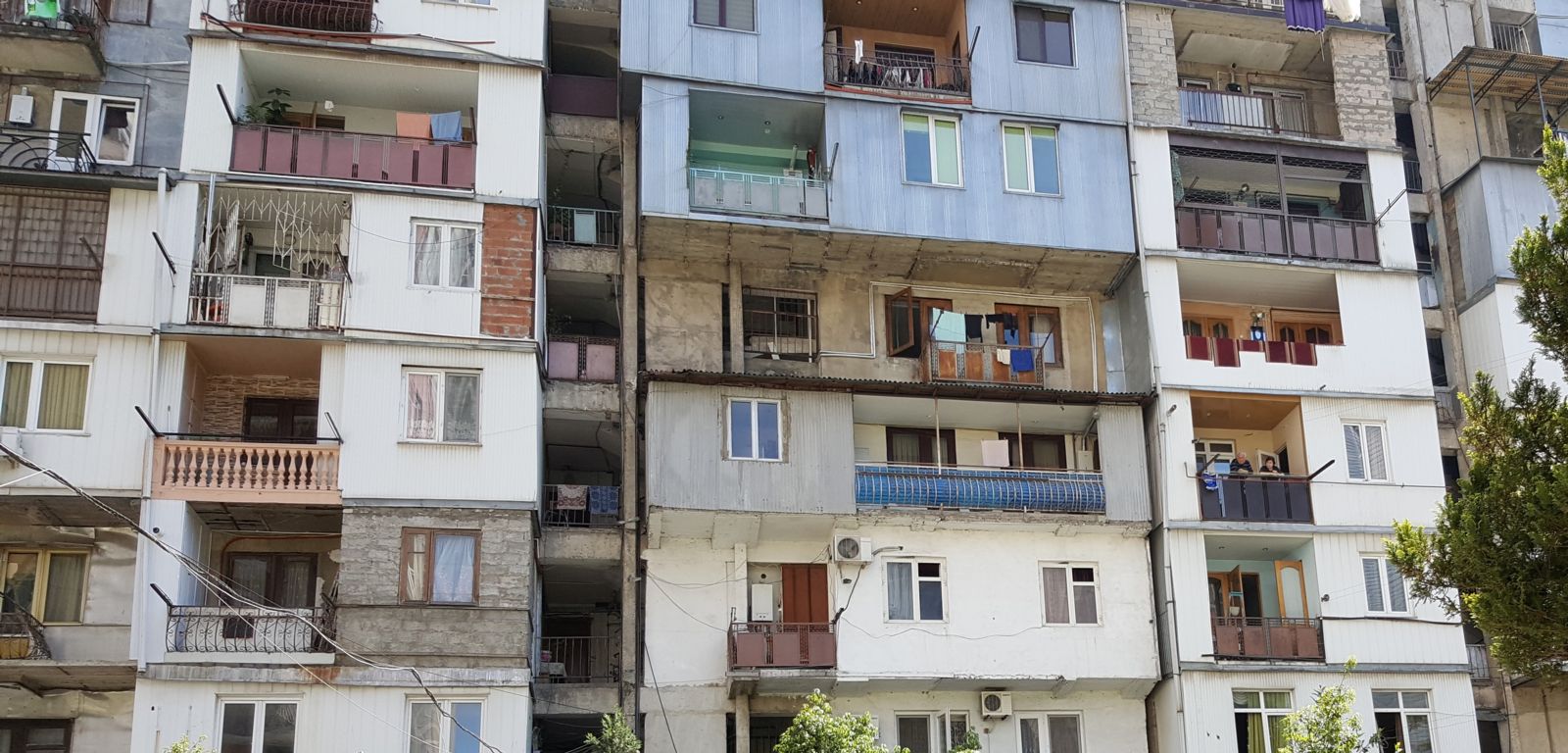Eastern Europe
A broad term...
Historical and geopolitical developments and commonalities shape the term under which IWO summarizes the region "Eastern Europe": it extends from the Oder-Neisse line and the eastern Adriatic Sea in the west to beyond Kazakhstan in the east, from Estonia in the north to Azerbaijan and Turkmenistan in the south.
So close for all the differences...
In questions of climate protection and sustainability, the countries of the Eastern European region have committed themselves to the same goals as their Western European neighbours and the international community. Their conditions and challenges, however, sometimes differ considerably.
The large-scale privatisation of housing in the course of the 1990s led to deformed markets today, with ownership shares of between 80 and 100 percent. The majority of housing is spread over large housing complexes built in prefabricated concrete slab construction during the Soviet era, often with major structural and energy deficiencies shortly after construction. These, in turn, sometimes result in precarious housing and living situations for today's residents. While in many countries of Western Europe one or few owners own and are responsible for such apartment buildings, in Eastern Europe there are often as many owner parties in an apartment building as there are residential units. Against this background, the housing markets here face particular challenges, which Germany in particular - with its specific expertise from the transformation of the housing sector in the new federal states following reunification - but also other European countries can contribute important experience and approaches to solving.
Impressions: Germany
Refurbishment work on a prefabricated building in Berlin. Photo: IWO e.V.
"Our" Eastern Europe
The common past in the socialist planned economy and the resulting consequences for housing construction and housing concepts are the starting point for the definition of the region, which IWO summarises under "Eastern Europe".
According to their development and conditions to date, especially on the economic and political level, IWO distinguishes between four sub-regions which together make up "our" Eastern Europe:
- Central and Eastern Europe (EU)
- South Eastern Europe (incl. EU accession candidates)
- Eastern EU Neighbourhood & Caucasus
- Russia & Central Asia
For each of these regions, individual overviews and country examples will be compiled here shortly.
Searching for and developing concrete solutions and projects requires to distinguish between the individual countries in these regions.
In particular, the political, economic and social processes of change in the countries of Eastern Europe after the end of the Soviet Union took very different courses and continue to this day in many places. While some Eastern European EU members such as Poland and the Czech Republic experienced an economic upturn and also developed their own strategies and approaches for modernising existing buildings at an early stage, other countries still lag far behind their development potential. This applies to Ukraine and Belarus, but also to some EU Member States such as Romania and Bulgaria. Even in the countries of the Balkan region, most of which are striving to join the EU, there are great challenges in the building sector as well as in the socio-political field. In addition to pending structural and institutional developments in these countries, factors such as the emigration of young people abroad in search of better life prospects and challenges like corruption, democratic deficits and insufficiently differentiated tax policies are hampering the economic alignment (also in terms of housing) with their Central and Western European neighbours.
Impressions: Caucasus

Residential house in need of refurbishment in Batumi, Georgia (2017), Photo: IWO e.V.
EU Eastern Europe - a brief
As in many countries worldwide, a large part of the energy consumption in Eastern Europe is accounted for by existing buildings. According to the Metropolitan Research Institute (MRI), the building sector accounts for a good 50 percent of primary energy consumption in seven of the eleven new EU countries. The potential for contributions to decarbonisation and climate protection is correspondingly large, especially with regard to residential buildings, most of which are outdated and in need of modernisation. At the same time, refurbishment rates in Eastern Europe average a low 0.2 percent annually, although they vary from country to country. In Western and Central Europe they are also insufficiently low, but range between 0.4 to 1.2 percent after all (Building Stock Observatory, EC 2018).
For the states of the post-Soviet region, the UNECE compiles Country profiles on urban development, housing, land use.